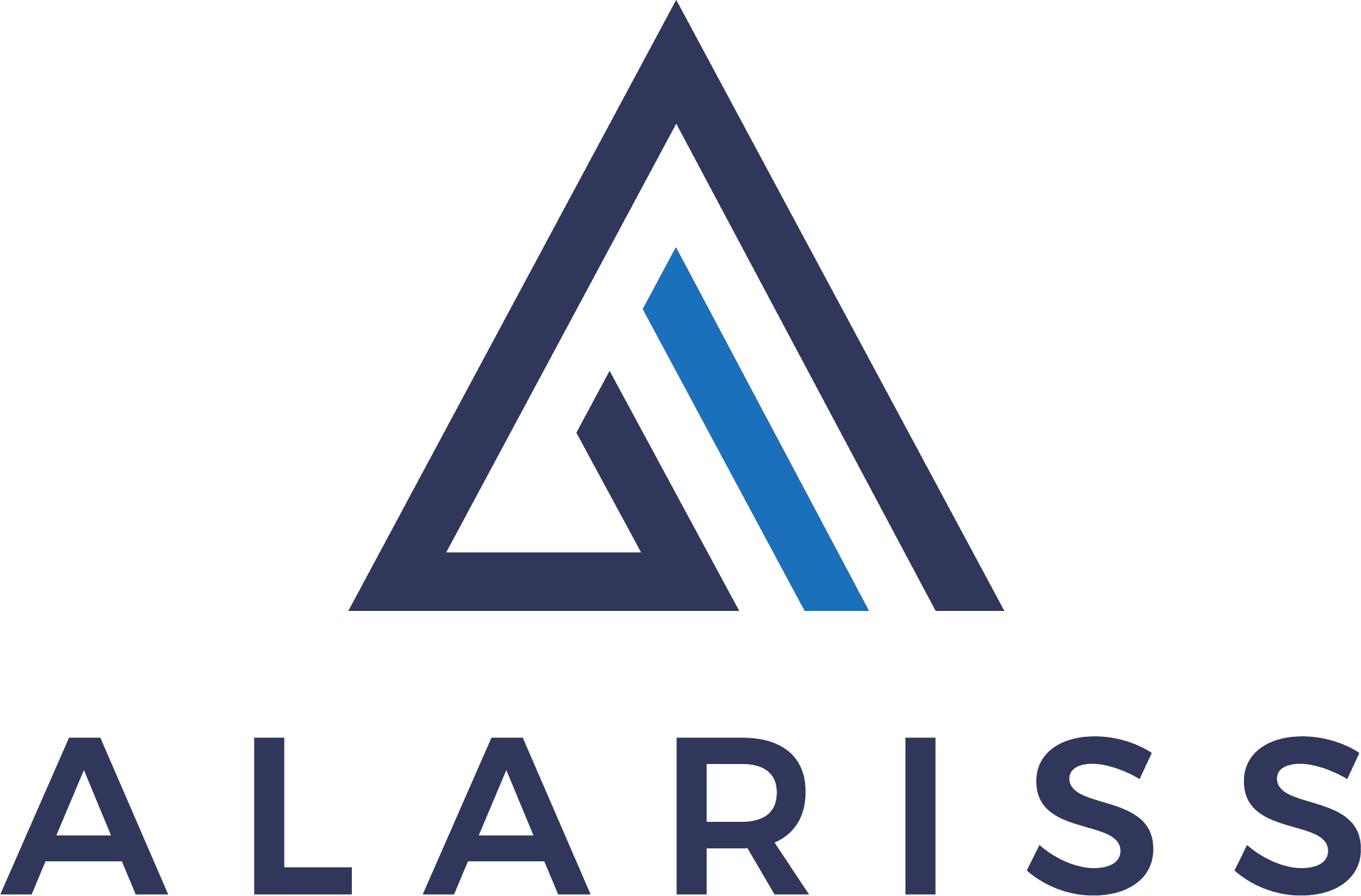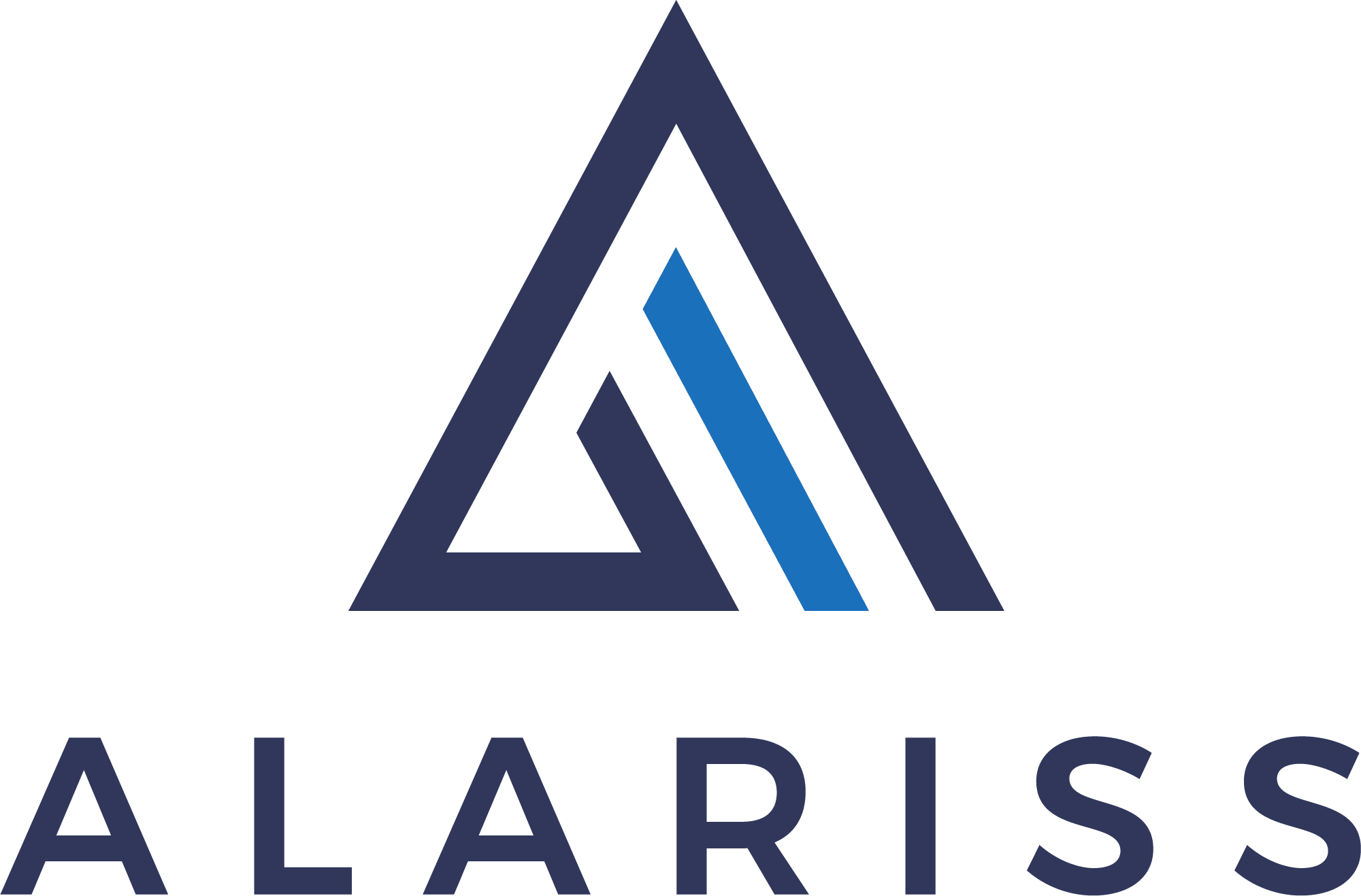Blog
Workforce Development: A Conversation with Ray Pulungan

May 23, 2022
Ray Pulungan, CEO of Pintar, a workforce development platform based in Indonesia, joins the podcast to discuss his company, his career, and training people for the jobs of the future.
Olivia Osuala: Hi. So today we’re with Ray Pulungan from Pintar, and we’re just going to start by introducing ourselves. I’m Olivia Osuala, I’m the business development and legal operations lead at Alariss; I’m a generalist who likes to do many different things. And we have Ray Pulungan here with us who is the CEO of Pintar, a workforce development platform, which we’re going to learn a lot more about today. So let’s start with that. Ray, can you give us some sort of overview about yourself and Pintar and what you do currently?
Ray Pulungan: Thank you, Olivia. My name is Ray Pulungan. I’m the CEO of Pintar, an education and workforce development platform focused on Southeast Asian learners. Pintar is basically a platform that has three core offerings. We have a degrees offering which includes online bachelor’s; online master’s programs, degrees. We also have a skills offering which is skills-based training, as well as an enterprise learning and development offering.
So, let’s get to the root of this. What were you doing before Pintar? What was sort of your trajectory in that regard? I imagine you were working on something else, I see on your profile that you’re also an investor yourself. So you were going about your normal day and you get a call, right? Like I want to sort of be a fly on the wall in terms of your thought process before you joined, why you joined, and what you felt the differentiation or the sort of edge that Pintar had that you found to be appealing.
I was an executive at a mining company, not Bitcoin mining but actual, physical mining metals and minerals out of the earth. So that’s what I was doing before. On a personal capacity, I do some angel investing, that’s just more of a hobby and a means to learn about technology and technology-based investing in Southeast Asia. So I received a call, I guess, about two years ago from the lead investor of Pintar to basically run this company, take three pre-existing product lines, the ones that I just mentioned, and build a business on top of it and take it to scale. This space is really compelling for me because I’m in an emerging market I guess, Southeast Asia and primarily in Asia where our operations are located, and over there there’s a big need for workforce development, upskilling, reskilling, and adult education. Productivity is low, output is low, and in today’s world where competition is global, there’s large swaths of people who need to be able to train and get a platform or work through a platform such as ours to actually unlock economic opportunity and better their livelihoods.
Interesting. So when you say there’s this constant need or demand for reskilling, upskilling in Southeast Asia, would you say that that’s sort of pertaining to a cultural sort of peculiarity? Or do you see this as a sort of global trend where industries are now demanding more from their employees in terms of really wanting or needing this sort of generalist skill-set or a constant means of sharpening or honing one’s skills? Would you say this is a global trend, or this is something that is peculiar to the Southeast Asian markets regarding your workers? And in terms of productivity, was this sort of a historical trend that has been happening for years or decades? Or have you found that the level of productivity has been exacerbated or worsened by the pandemic?
So I think this is a global trend, this is happening everywhere, and I think a large driver of this is technological-induced change. I think industries are being sideswiped by a lot of the destruction that’s happening, and I think they need to respond and the workforce that currently exists in many markets needs to be basically upskilled. The half-life of a skill is increasingly becoming shorter and shorter. I think globally, this is par for the course, but I think the way certain industries and certain workforces and certain governments respond to it, I think that’s where the variance happens across economies. I think this is a trend that’s been happening for quite some time. If you look at the markets, it’s probably 30 years ago that you’ve been having these pressures and need to continuously upskill and reskill on the labor side of things, and I guess emerging markets is probably 20 years ago. And I think the difference is you had that 10-year gap where jobs could be outsourced, cheaper labor overseas, more cost-competitive labor overseas, but when you introduce technology into the picture and technology substituting for labor, I think now it becomes a uniform impact on people and jobs everywhere. So I think in that regard, it’s important to make a distinction between high-skilled, middle-skilled, low-skilled workers. I know there’s this discussion about Globalization 3.0 and how technology does open a lot more skilling opportunities for workers, but I think in markets such as ours where there’s more low-skilled workers, the threat is real and if these workers are not equipped with the right skills, advanced in the digital age, then it basically makes it an existential threat for them, right? Their jobs, their livelihoods, their household incomes.
So this is sort of a larger looming threat to economies and industries, right? Because, like you said with the advancement of technology, a lot of people can directly source talent abroad. So if certain markets have a labor force that are not equipped to compete on the global stage, that could spell doom for the economies where these markets lie.
No, it shouldn’t. Globalization, having labor mobility, access to global opportunity, is a good thing. But I think in certain markets where their education systems have not kept pace with the rest of the world, it becomes an issue in these markets. So there’s a bit of a distributional problem. And I always say in markets like the US, it’s a great thing, right? You can have access to opportunities in Madrid, you could have opportunities in Tokyo, but for lower-skilled labor, you may not have access to the same opportunities because you weren’t equipped given the local systems in your market, in your economy.
So let’s just take a few steps back, back to Pintar. Say I was a Southeast Asian company or maybe an Indian company based in Bangalore and I wanted to utilize your business, your services. What would that experience be like for me? Like can you sort of walk me through what the client’s experience is?
In terms of the corporate client’s perspective, working with Pintar, there’s a number of use cases. The main one, or the first one that we’ve developed, is basically developing learning pathways within the enterprise and understanding what kind of learning, what kind of certifications, what kind of trainings that you would need in order to progress within the enterprise along a career pathway that basically branches out from your current role. Or if you were interested in making a lateral into a different role with a separate career pathway, you could enable that to happen. So that’s the first one.
The second one is, which is related to the first one, compliance training and working with regulators in specific industries to make that compliance training happen a lot more efficiently. In the past, a lot of it was done manually where it would take up a worker’s time, a week to two weeks, to happen offsite. And sometimes on the back of that, there were site visits as well from the regulators to understand more of the details of the business. So by porting some of that online, we take the offline components, the travel, the logistics, all of the costs associated with that becomes a savings to the company.
And then thirdly, this is something that we’ve recognized and this is touching on that broader theme about labor, most of the companies that we work with operate in areas where you have large communities that really have no other employer. So that company is basically the employer of note in that community and there are only a limited number of jobs to go around and therefore, they’re stuck on the outside looking in. So these companies want to do right by the community, they’re in a foreign stakeholder, and they provide education and training, basically investment in human capital so members of this community can actually find jobs elsewhere. So we work with, let’s say, a company and provide short-course trainings, degree programs for people in those communities that haven’t had a university experience or higher education experience, with the singular focus of enabling an economic opportunity on the back end which could mean jobs. So sometimes we look at the number of job placements, it could mean improving or enhancing a business they already run which could be done primarily offline, but now we could enable access to the digital economy. And then we would look at an uplift in earnings as our measure of success from the intervention that we’ve introduced or even empowering or enabling entrepreneurs and we’ve been doing some of this with a focus on women. So this is like half of your workforce that’s typically either underemployed or unemployed, so figuring out ways to empower segments of society that were not a focus of education and trade benefits.
So in a larger sense, Pintar is sort of the great equalizer, right? Equipping companies, industries, the workers within those industries, with the skill-set that is needed in today’s world. Having said that, how do you think or why do you think Indonesia’s tech ecosystem is growing so fast?
I think in the case of Indonesia, it’s a large economy, it’s about 300 million people, very young, 28-year-old, 29-year-old median age, and there’s a lot of interest in the internet. So digital adoption is increasing, and a lot of that has to do with leapfrogging directly into the mobile experience where we don’t have the legacy systems that we’re tied to. So a lot of digital leapfrogging. I think also in the context of Southeast Asia, I would say Indonesia is like the biggest economy, but if you look at it from a regional context, Indonesia is probably the crown jewel of Southeast Asia. But within Southeast Asia itself, I think there’s a regional play, and I think a lot of the tech companies that look at Southeast Asia see that there is a multimarket strategy here to be executed, and it becomes even more attractive with Indonesia being the point of entry in Southeast Asia.
Interesting. So how do you categorize Pintar? Would you say you’re in the edtech niche right now?
No, I think we’re more workforce than edtech. I think initially our first products were online degrees so in that sense, the edtech is still part of our legacy, and we are proud of that. But in the past where Pintar would service universities primarily, we’ve worked with universities now as our partners to provide learning experiences on our platform. But we also work with other providers of learning experiences, training houses, even domain experts, even some of our corporate clients are customers themselves who have expertise within that uprise and we work with them to be creators of learning experiences, content creators on our platform. So on the supply side, the university has expanded in terms of where we get that expertise or that knowledge from or those skills from. And it’s also expanded in terms of geographical coverage. So before it was basically very Indonesia-sourced, but now we’re looking globally, including in the US. We’re taking these learning experiences and we’re putting them on a platform in service of the user, and our user is basically the learner, the worker. Our mission is to empower labor through lifelong learning, so it’s worker-focused, and we want to make sure that learning is relevant so those workers could actually obtain better livelihoods.
How would you say your industry has been impacted by the pandemic specifically?
So our experience with the pandemic was actually a positive one because there were a lot of people that were displaced by the pandemic, and the Indonesian government actually stepped in and provided assistance, and the assistance was in the form of skilling. So working with us, we were one of two platform providers in the beginning that worked with the Indonesian government to provide skilling opportunities for large segments of the workforce so when the economy gets back on track that they would have an easier time to transition back into the workforce. So that’s a great thing, and I think when you talk about workforce development, I don’t think you can actually exclude any government from the picture because that’s an important constituent to the government in terms of multiple things, but not least of which is their own physical receipts. So we stepped into that picture, and we’ve been going forward that the public sector, the social sector, would be a good partner of ours to tackle on this big issue. What we hope in our market, which we see is happening elsewhere in the world, particularly the US, is for corporates to step in and also answer the call of skilling their stakeholders, their constituents. Not only their employees but also other stakeholders around their area of operations or touch on their area of operations.
So you’ve highlighted some very important points, governments have to do more in spite of the mandate, and it’s sort of a holistic solution with companies investing in workforce development, and then there’s governments on the other hand. But apart from the way that you’ve mentioned the Indonesian government stepped in to accelerate this growth and workforce development, are there other ways you think that governments on a global scale can step in to sort of improve the outcome for industries within their economies?
So I think the reason why as many companies in the US are doing well is because governments are providing incentives for companies to invest in their workers or in their stakeholders. So there’s a tax incentive, and some of these mechanisms are being experimented on in our market. You have a 200% tax deduction where there’s eligibility which is still limited for companies to invest in human capital. So I think that’s a very powerful mechanism for companies or corporates to get onboard and follow the lead of what governments are doing in some of these markets. So if they’re providing these to get cross-sector collaboration on this very important issue, I think that’s one way that they can do so.
Interesting. I think there’s very salient parallels between Alariss and Pintar in the sense that we are very much consumer-facing on one hand, which like you said, Pintar does workforce development. So you’re sort of liaising with workers within markets on a constant basis. How did you discover Alariss, and why did you decide to partner with Alariss? And what has the impact been for you?
So at Pintar, we definitely subscribe to the view that learning should be global and connecting and building a network should be global. The mission that Alariss is on is one that we wholeheartedly agree with and support. I mentioned in our market there was a bit of a catch up that needs to happen because the educational system is a bit dated and hasn’t kept up with demands of industry. So waiting for that to change will take decades, and by then our business would be dead, so we can’t wait for that to happen. So we’d want it to happen to a global labor pool in order to advance our business, and that’s where Alariss came in with a very strong proposition for us. I think Alariss also deals with different markets globally, and they understand different market contexts, so being able to bridge our needs with deeper talent pools in other markets was very important, and we wouldn’t be able to get some of the discussions, conversations, partners, even people who actually joined our team without Alariss’ help because basically we’re an unknown outside of our home markets. So I think being an advocate of that as well as having the networks that Alariss does have actually helped us out a lot in terms of tapping a global talent pool.
So on a much higher level, governments are incentivized to provide incentives for companies such as yours to execute their business model. I understand on a very molecular level why a government would invest in workforce development, but what do you think, within the next five years and one decade, what do you think the long-lasting impacts will be for governments that have a workforce that is not equipped to push forward their economy. Like when you have a labor force that does not have the requisite skills in today’s world to move forward in terms of innovation and advancement. What do you think the benefits would be for governments that sort of leveraged the pandemic in a way that is really beneficial and also leverage companies like yours to push things forward?
I think that the pandemic showed a couple of things. It revealed basically systemic vulnerabilities when you have a stresser like the pandemic and you can see where the system breaks. Not only on the healthcare side, but also on the labor markets and what we do in order to prepare our people to participate in those labor markets. So it revealed some of the weaknesses on the educational system as well as the rigidity of certain labor markets. It also revealed who is vulnerable and who bears the brunt of systemic stressors like the pandemic. So I think that was a big wake-up call for governments around the world, particularly in governments where you have large segments of the population living on the margins, such as in Indonesia. I think people around the world are the same, humans are the same everywhere. So if people are not being equipped for the opportunities that are available in our increasingly global age, I think there’s a real list of people who will just leave, right? For markets where they’re able to access those opportunities. So it’s a real risk of brain drain and for people who are providing labor as opposed to providing capital are leaving your economy, then what you’ll see is you’ll see a lot more social inequality in your market. So people who are able to provide labor are not being valued, they’re leaving for other markets where they are properly valued, and what you have left are people who provide capital and probably substituting that labor for technology processes and other things. They’ll just have a lot more of an unequal society that’s left behind.
I totally agree, and I think on that note we are going to conclude as we are running out of time, but before you leave, just a random question. If you were a superhero, what would you be and why?
If I was a superhero–fun fact by the way, Olivia. I used to sell comic books when I was younger, I used to buy them wholesale and sell them retail to my classmates, so I know a little bit about superheroes. But I think the origin story of probably 80% of superheroes are those that actually have experienced some form of tragedy and was able to turn it into something good, a motivating force for good. So anyone who’s like that, that’s not vengeful, not bitter, not angry, but actually could take that experience and do good and advance others is someone who I’d want to be. But since most of the superheroes are like that, I guess all else equal, probably the one that has the most cool toys or the best lifestyle.
All right then. So yes, we’ll conclude on that note. Thanks, Ray, and thanks for coming over to our corner of the internet with your Batmobile, it was fun having you here, and I’m going to of course keep track of Pintar. I wish you great success in the future. Thank you.
Thank you, Olivia.





